Abstract
The beta-binomial model is widely used for analyzing teratological data involving littermates. Recent developments in statistical analyses of teratological data are briefly reviewed with emphasis on the model. For statistical inference of the parameters in the beta-binomial distribution, separation of the likelihood introduces an likelihood inference. This leads to reducing biases of estimators and also to improving accuracy of empirical significance levels of tests. Separate inference of the parameters can be conducted in a unified way.
Full text
PDF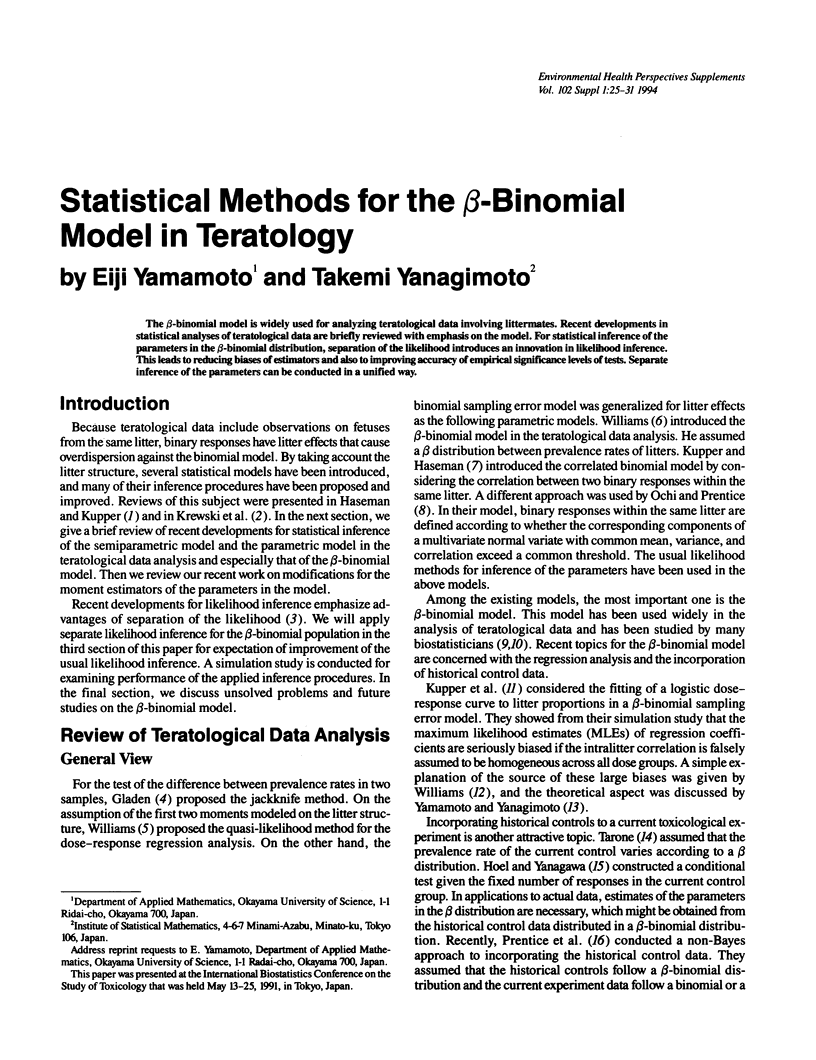
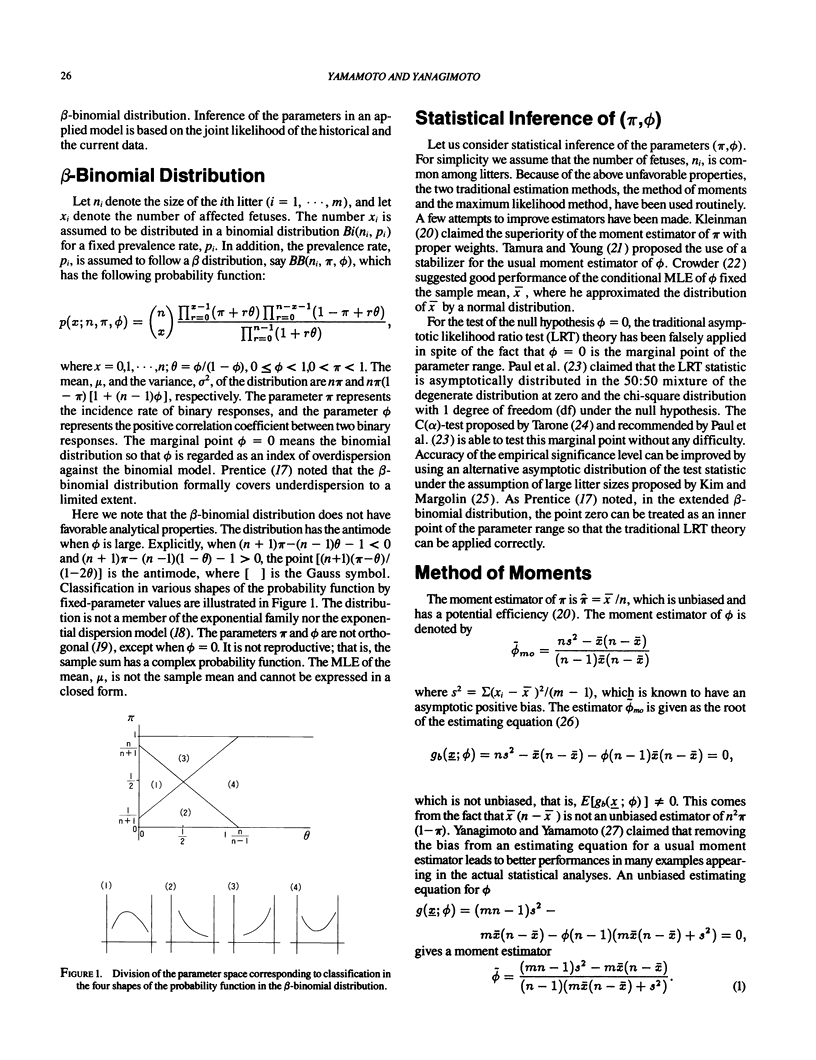
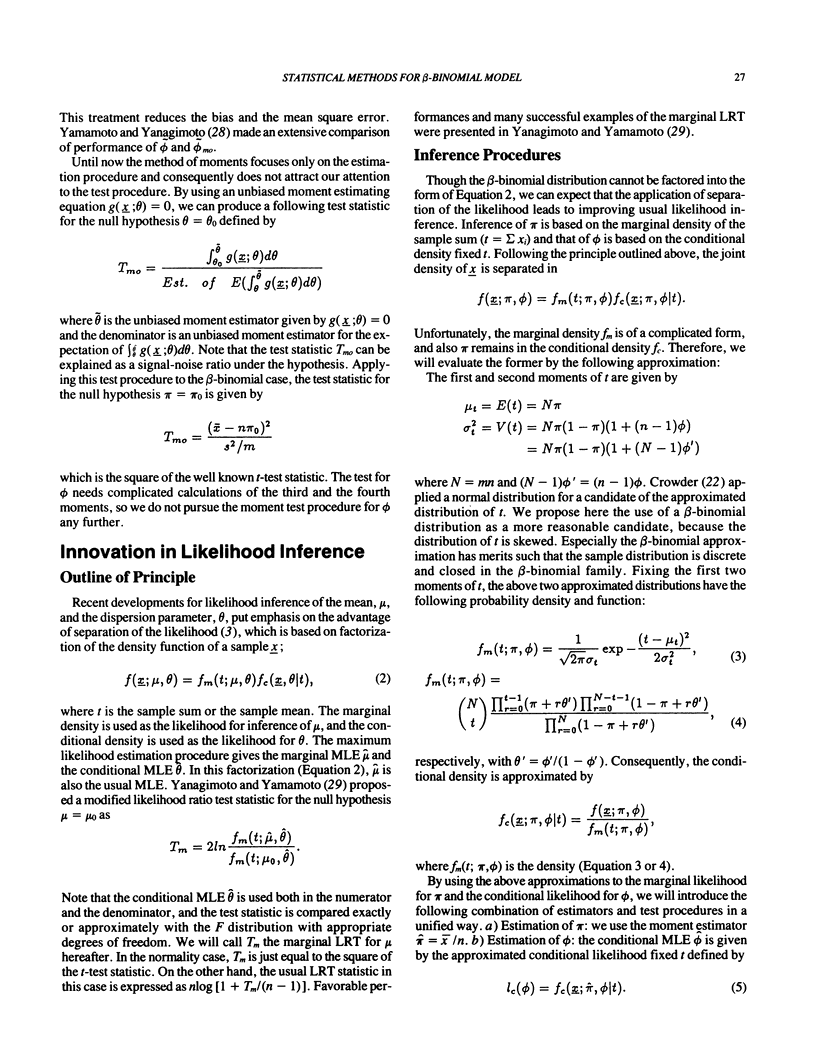
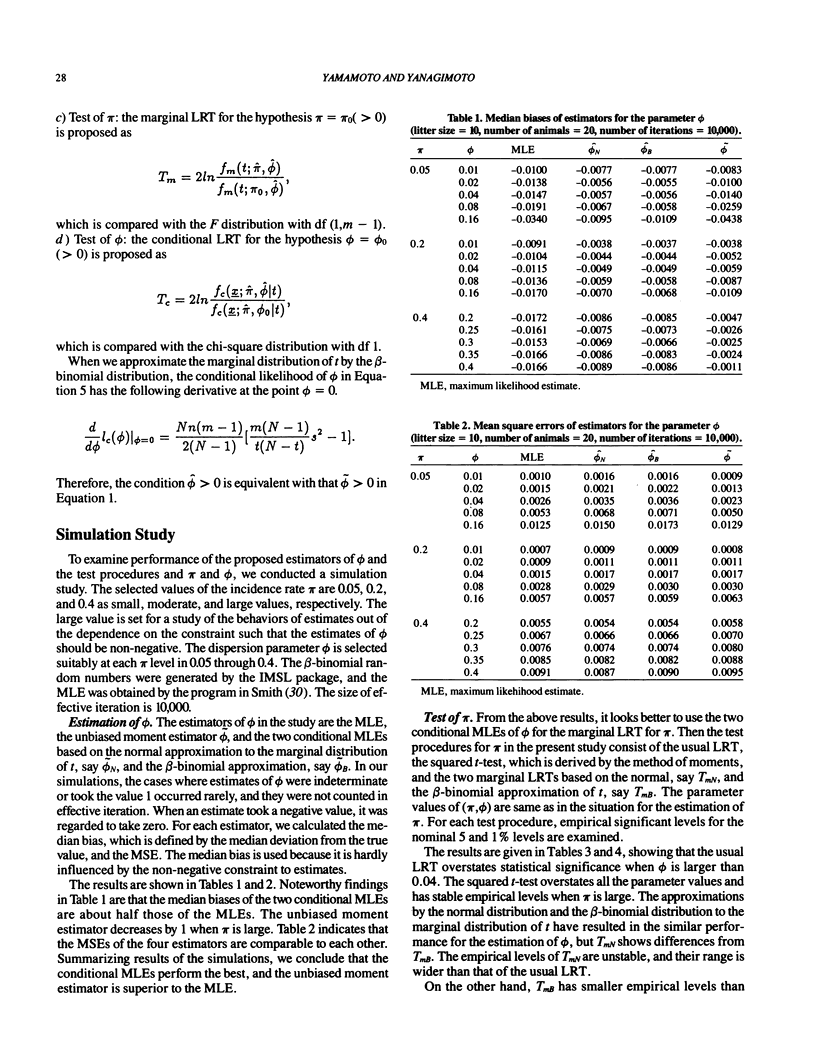
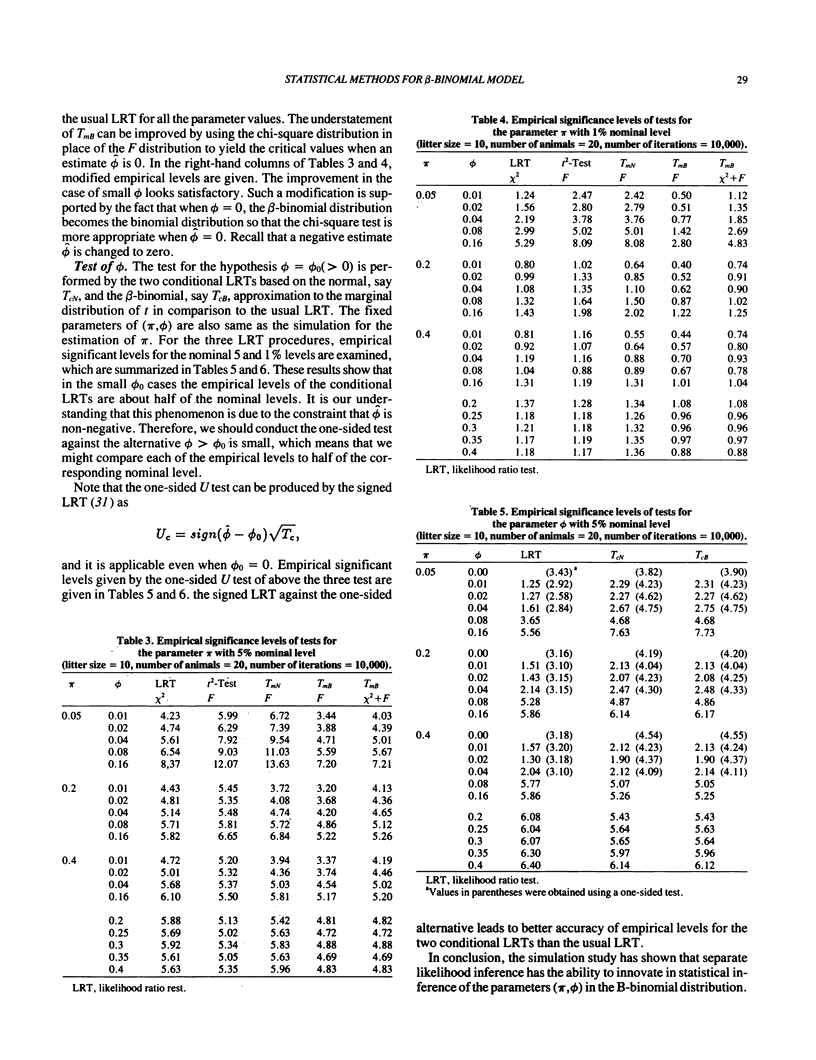
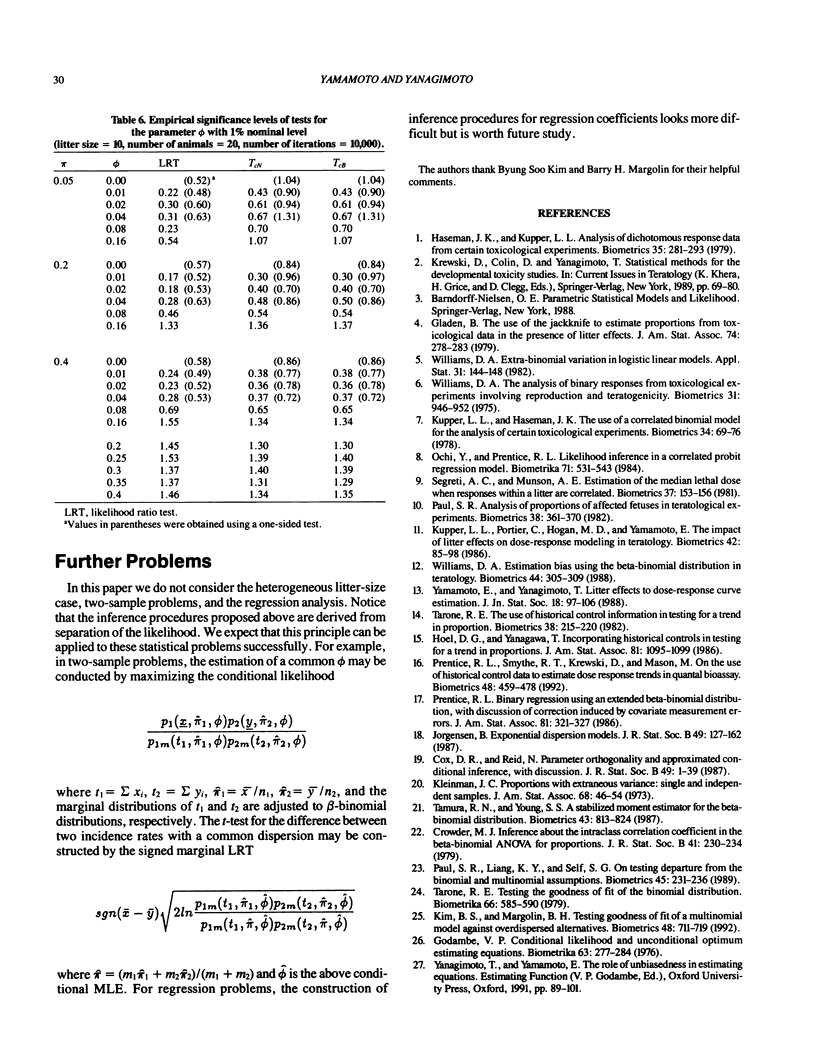

Selected References
These references are in PubMed. This may not be the complete list of references from this article.
- Haseman J. K., Kupper L. L. Analysis of dichotomous response data from certain toxicological experiments. Biometrics. 1979 Mar;35(1):281–293. [PubMed] [Google Scholar]
- Kupper L. L., Haseman J. K. The use of a correlated binomial model for the analysis of certain toxicological experiments. Biometrics. 1978 Mar;34(1):69–76. [PubMed] [Google Scholar]
- Kupper L. L., Portier C., Hogan M. D., Yamamoto E. The impact of litter effects on dose-response modeling in teratology. Biometrics. 1986 Mar;42(1):85–98. [PubMed] [Google Scholar]
- Paul S. R. Analysis of proportions of affected foetuses in teratological experiments. Biometrics. 1982 Jun;38(2):361–370. [PubMed] [Google Scholar]
- Paul S. R., Liang K. Y., Self S. G. On testing departure from the binomial and multinomial assumptions. Biometrics. 1989 Mar;45(1):231–236. [PubMed] [Google Scholar]
- Prentice R. L., Smythe R. T., Krewski D., Mason M. On the use of historical control data to estimate dose response trends in quantal bioassay. Biometrics. 1992 Jun;48(2):459–478. [PubMed] [Google Scholar]
- Segreti A. C., Munson A. E. Estimation of the median lethal dose when responses within a little are correlated. Biometrics. 1981 Mar;37(1):153–156. [PubMed] [Google Scholar]
- Tamura R. N., Young S. S. A stabilized moment estimator for the beta-binomial distribution. Biometrics. 1987 Dec;43(4):813–824. [PubMed] [Google Scholar]
- Williams D. A. Estimation bias using the beta-binomial distribution in teratology. Biometrics. 1988 Mar;44(1):305–309. [PubMed] [Google Scholar]
- Williams D. A. The analysis of binary responses from toxicological experiments involving reproduction and teratogenicity. Biometrics. 1975 Dec;31(4):949–952. [PubMed] [Google Scholar]


